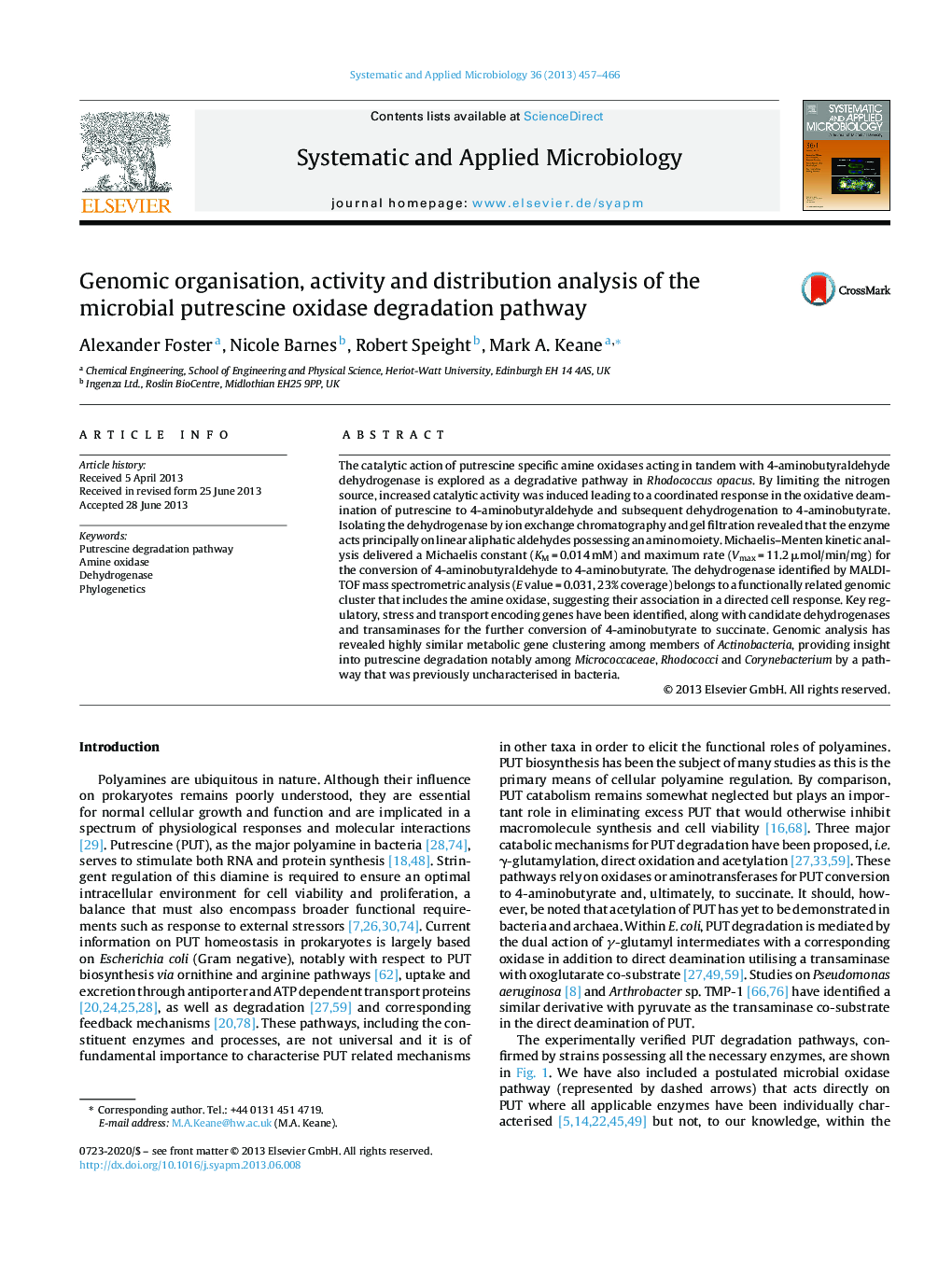| Article ID | Journal | Published Year | Pages | File Type |
|---|---|---|---|---|
| 2063743 | Systematic and Applied Microbiology | 2013 | 10 Pages |
The catalytic action of putrescine specific amine oxidases acting in tandem with 4-aminobutyraldehyde dehydrogenase is explored as a degradative pathway in Rhodococcus opacus. By limiting the nitrogen source, increased catalytic activity was induced leading to a coordinated response in the oxidative deamination of putrescine to 4-aminobutyraldehyde and subsequent dehydrogenation to 4-aminobutyrate. Isolating the dehydrogenase by ion exchange chromatography and gel filtration revealed that the enzyme acts principally on linear aliphatic aldehydes possessing an amino moiety. Michaelis–Menten kinetic analysis delivered a Michaelis constant (KM = 0.014 mM) and maximum rate (Vmax = 11.2 μmol/min/mg) for the conversion of 4-aminobutyraldehyde to 4-aminobutyrate. The dehydrogenase identified by MALDI-TOF mass spectrometric analysis (E value = 0.031, 23% coverage) belongs to a functionally related genomic cluster that includes the amine oxidase, suggesting their association in a directed cell response. Key regulatory, stress and transport encoding genes have been identified, along with candidate dehydrogenases and transaminases for the further conversion of 4-aminobutyrate to succinate. Genomic analysis has revealed highly similar metabolic gene clustering among members of Actinobacteria, providing insight into putrescine degradation notably among Micrococcaceae, Rhodococci and Corynebacterium by a pathway that was previously uncharacterised in bacteria.
